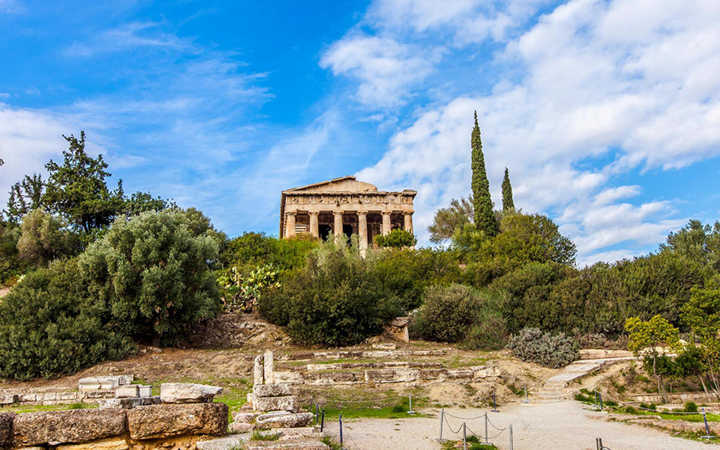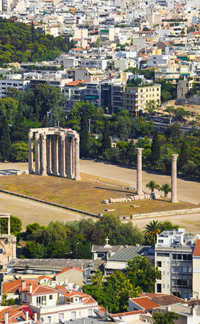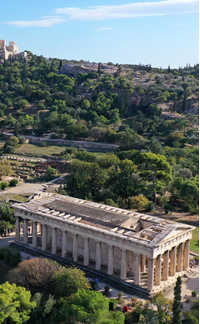The Temple of Hephaestus, also known as the Hephaisteion, is one of the most remarkably preserved ancient structures in Athens. Standing proudly in the Athenian Agora, this Doric temple was dedicated to Hephaestus, the god of fire, metalworking, and craftsmanship in Greek mythology. Often overshadowed by the more famous Parthenon, the Temple of Hephaestus offers a quieter yet equally captivating glimpse into ancient Greek religious and architectural history.
History and Significance
Constructed between 449 and 415 BC, the temple was built on the site of a much earlier, smaller shrine dedicated to Hephaestus. Its creation was partly the result of the city's dedication to showcasing its wealth and the expertise of its craftsmen during the golden age of Athens. While it was primarily a place of worship for Hephaestus, it also honored Athena Ergane, the goddess of artisans.
The temple’s role in Athenian society was multi-faceted. As a focal point of the city’s religious life, it not only honored Hephaestus but also reflected Athens' strength as a city of artistry, particularly metalwork and craftsmanship. The temple’s location in the Agora further signifies the connection between divine protection and daily Athenian life.
Architectural Features
The Temple of Hephaestus is an exceptional example of Doric architecture, with a peripteral design (a temple surrounded by a single row of columns). It stands on a base of three steps, with 6 columns at the front and 13 along the sides. What makes the temple stand out is its remarkable state of preservation. Unlike many other ancient ruins, the Temple of Hephaestus has suffered little from the ravages of time, war, or earthquakes, giving visitors an almost authentic glimpse into its original grandeur.
The temple’s façade is adorned with beautifully sculpted metopes and a frieze depicting scenes from Greek mythology, including the Labors of Heracles and the myth of Theseus and the Minotaur. These sculptures, while weathered, remain integral to the temple’s allure, highlighting the artistry of the ancient Athenians.
The Temple’s Later Use
Although initially dedicated to Hephaestus and Athena, the temple’s role evolved over the centuries. During the Roman period, it was transformed into a Christian church, and later, it became a mosque under Ottoman rule. These changes demonstrate the temple's adaptability and its continuing importance throughout various phases of history. Despite these alterations, the temple’s structural integrity remained, allowing it to stand as one of the best-preserved ancient monuments in Athens.
Visiting the Temple of Hephaestus
Located in the heart of the Athenian Agora, the Temple of Hephaestus is a key attraction for visitors looking to explore Athens' rich ancient heritage. The temple is open year-round and is a must-see for those interested in classical Greek architecture, mythology, and history.
Visitors can marvel at the temple’s stunning Doric design, take in the intricate sculptural details, and learn about the historical context of its construction and use. The temple also provides an excellent opportunity for photos, especially from the surrounding ruins of the Agora and the view of the Acropolis in the distance.
The Temple of Hephaestus offers a perfect combination of history, culture, and architecture, making it an essential stop on any trip to Athens. Whether you're a history enthusiast or simply a lover of beautiful ancient architecture, this temple should not be missed during your visit to the Athenian Agora.


















